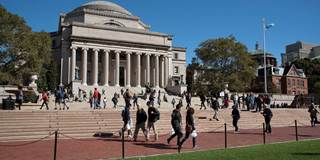Every major performance indicator has America's universities leading the world. Unfortunately for those who seek to emulate the US system, the American model reflects unique historical, political, and financial factors.
STANFORD – In the second half of the twentieth century, American universities and colleges emerged as dominant players in the global ecology of higher education, a dominance that continues to this day. In terms of the number of Nobel laureates produced, eight of the world’s top ten universities are in the United States. Forty-two of the world’s 50 largest university endowments are in America. And, when ranked by research output, 15 of the top 20 institutions are based in the US.
Given these metrics, few can dispute that the American model of higher education is the world’s most successful. The question is why, and whether the US approach can be exported.
While America’s oldest universities date to the seventeenth and eighteenth centuries, the American system of higher education took shape in the early nineteenth century, under conditions in which the market was strong, the state was weak, and the church was divided. The “university” concept first arose in medieval Europe, with the strong support of monarchs and the Catholic Church. But in the US, with the exception of American military academies, the federal government never succeeded in establishing a system of higher education, and states were too poor to provide much support for colleges within their borders.

STANFORD – In the second half of the twentieth century, American universities and colleges emerged as dominant players in the global ecology of higher education, a dominance that continues to this day. In terms of the number of Nobel laureates produced, eight of the world’s top ten universities are in the United States. Forty-two of the world’s 50 largest university endowments are in America. And, when ranked by research output, 15 of the top 20 institutions are based in the US.
Given these metrics, few can dispute that the American model of higher education is the world’s most successful. The question is why, and whether the US approach can be exported.
While America’s oldest universities date to the seventeenth and eighteenth centuries, the American system of higher education took shape in the early nineteenth century, under conditions in which the market was strong, the state was weak, and the church was divided. The “university” concept first arose in medieval Europe, with the strong support of monarchs and the Catholic Church. But in the US, with the exception of American military academies, the federal government never succeeded in establishing a system of higher education, and states were too poor to provide much support for colleges within their borders.